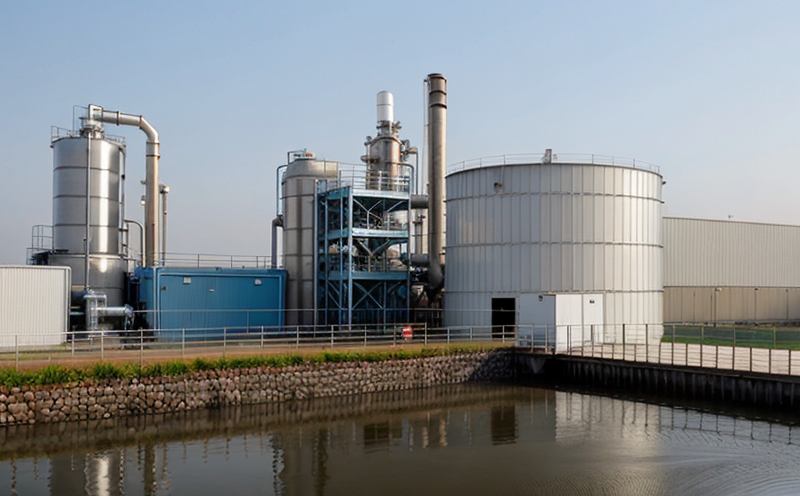ISO 5667 Sampling Procedures for Industrial Wastewater
The ISO 5667 standard provides guidelines and procedures for sampling industrial wastewater. This service ensures that samples are collected in a representative manner to accurately reflect the characteristics of the wastewater stream, which is crucial for monitoring compliance with environmental regulations and ensuring safe disposal or reuse.
Sampling in industrial settings can be challenging due to varying flow rates, mixing conditions, and potential contamination from external sources. The ISO 5667 standard addresses these challenges by specifying methods that account for the unique characteristics of industrial wastewater streams. This service supports various sectors including chemical manufacturing, pharmaceuticals, electronics, food processing, and textile industries.
The sampling process is critical to ensure accurate analysis of pollutants such as heavy metals, organic compounds, nutrients, and pathogens. Proper sampling techniques prevent errors in analytical results that could lead to incorrect conclusions about the environmental impact or compliance status of industrial operations.
Under this service, we employ a range of tools and equipment designed specifically for industrial wastewater sampling. These include specialized samplers capable of collecting samples from various points along the wastewater flow path, ensuring a representative sample is collected at each point.
The sampling process typically involves several stages: selection of sampling location(s), determination of sampling frequency, design of sampling strategy, collection and preservation of samples, and documentation of procedures used. Each stage must be carefully planned to ensure that the sampled material reflects the overall characteristics of the wastewater stream being analyzed.
| Applied Standards | Description |
|---|---|
| ISO 5667-1:2008 | Guidelines for sampling industrial wastewater streams |
| ISO 5667-2:2009 | Sampling of industrial wastewater streams in the presence of solids and other particulates |
The ISO standards provide detailed guidance on selecting appropriate sampling locations, ensuring proper sample preservation techniques are employed, and documenting all aspects of the sampling procedure. By adhering to these guidelines, we ensure that our clients receive accurate and reliable data from their wastewater samples.
- Properly planned and executed sampling plans
- Use of calibrated instrumentation
- Documentation of all sampling procedures
- Analysis by accredited laboratories using validated methods
Our expertise in industrial water & wastewater testing allows us to provide comprehensive support throughout the entire sampling process, from initial planning through final analysis and reporting. We work closely with our clients to understand their specific needs and requirements before recommending a tailored approach.
Applied Standards
| Standard Code | Description |
|---|---|
| ISO 5667-1:2008 | Guidelines for sampling industrial wastewater streams |
| ISO 5667-2:2009 | Sampling of industrial wastewater streams in the presence of solids and other particulates |
The ISO standards mentioned above form the basis for our sampling procedures. These guidelines ensure that we collect representative samples under controlled conditions, which are essential for accurate analysis.
Why Choose This Test
The ISO 5667 sampling procedure is selected because it provides a robust framework for collecting wastewater samples from industrial processes. By adhering to these standards, we guarantee that the sample collection process is conducted consistently and accurately across different facilities.
This consistency leads to reliable data which can be used to make informed decisions about operational changes or regulatory compliance measures. Additionally, using this standard helps maintain a high level of credibility within the industry, ensuring trust among stakeholders including regulators, customers, and investors.
Our commitment to quality ensures that every sample we collect meets strict criteria set forth by these international standards. This not only supports our clients' goals but also contributes positively towards protecting public health and environmental sustainability.
Use Cases and Application Examples
- Monitoring compliance with discharge permits
- Ensuring safe disposal or reuse of wastewater
- Evaluating treatment efficiency in industrial plants
- Identifying sources of contamination within the production process
| Application Example | Description |
|---|---|
| Chemical Manufacturing Plant | Sampling wastewater downstream from a reactor to monitor for residual chemicals. |
| Pharmaceutical Company | Collecting samples before and after primary treatment stages in the purification process. |
| Electronics Manufacturer | Sampling at multiple points along the production line to identify any potential leaks or spills. |
In each case, accurate sampling is crucial for effective monitoring and management. Our ISO 5667-compliant services offer precise and reliable results that help our clients stay ahead of regulatory requirements while improving operational efficiency.





